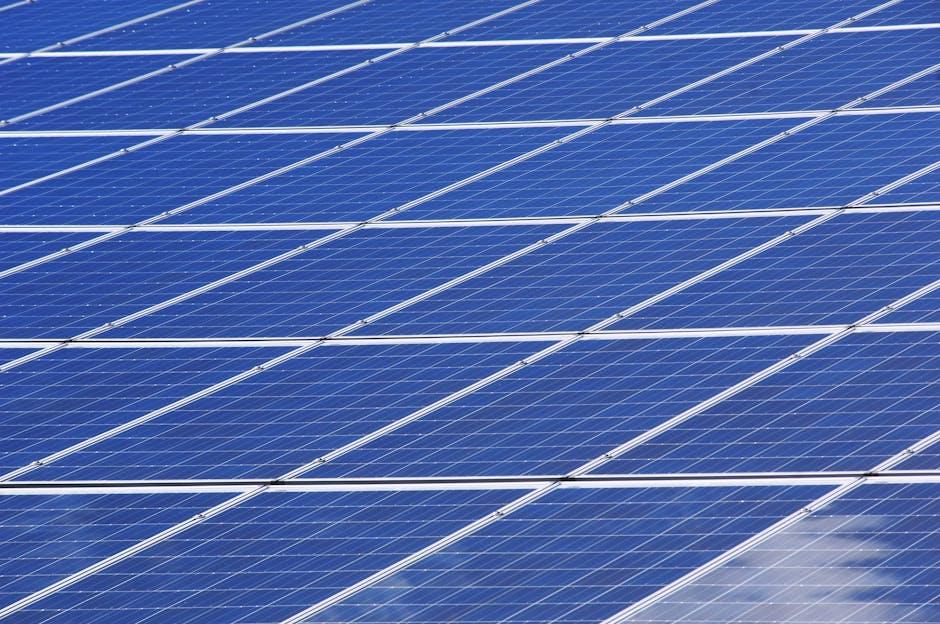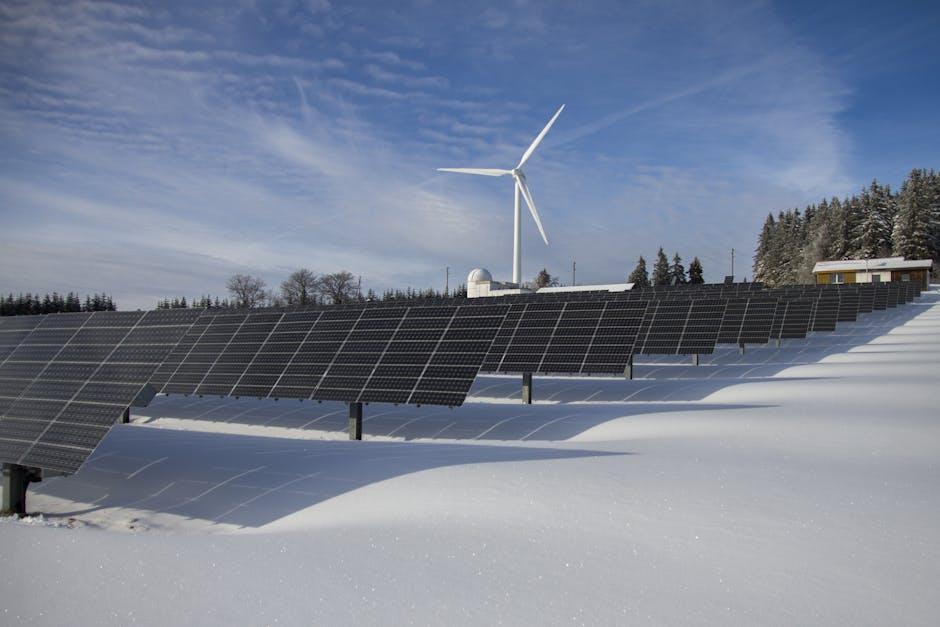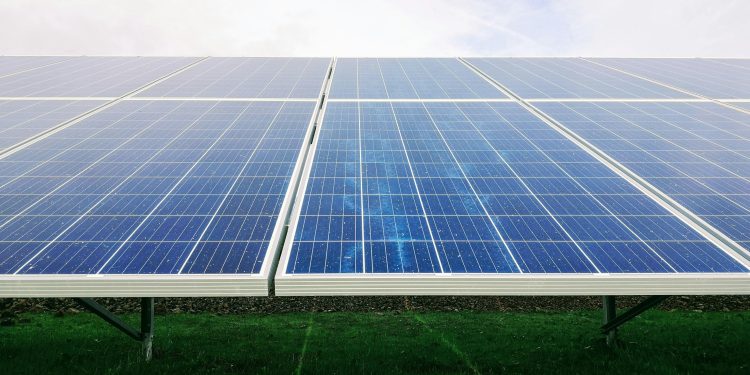In the ever-evolving narrative of sustainable energy, the debate over whether solar energy should take precedence over wind power emerges as a central theme. As the world grapples with the urgent need to transition from fossil fuels to renewable sources, solar and wind energy stand out as two of the most promising contenders. Each harnesses the natural elements in its own unique way, painting a future where clean energy reigns supreme. However, with limited resources and the pressing need for impactful solutions, the question of prioritization arises. Should we tilt our gaze more towards the sun or let the winds guide our energy future? This article delves into the nuances of this debate, exploring the strengths, limitations, and potential of each energy source in the quest for a greener planet.
Comparative Efficiency: Examining the Energy Output of Solar and Wind Technologies
In the quest for sustainable energy solutions, both solar and wind technologies have emerged as front-runners, each with unique characteristics that influence their energy output efficiency. Solar energy, harnessed through photovoltaic cells, converts sunlight directly into electricity. Its efficiency largely depends on factors such as geographical location, time of year, and weather conditions. Wind power, on the other hand, is generated by converting the kinetic energy of wind into electricity using turbines. The efficiency of wind energy is contingent upon wind speed and consistency, which can vary significantly from one location to another.
- Solar Energy:
- Efficiency varies with sunlight availability.
- Ideal for regions with high solar insolation.
- Energy production peaks during daylight hours.
- Wind Power:
- Efficiency is dependent on wind speed and regularity.
- Suitable for coastal and open plain regions.
- Can generate electricity day and night, if wind conditions are favorable.
Ultimately, the choice between prioritizing solar or wind energy involves considering these factors alongside environmental impact, cost, and energy demand. By evaluating the comparative efficiency of each technology, stakeholders can make informed decisions that align with both regional capabilities and broader sustainability goals.
Environmental Footprint: Analyzing the Ecological Impact of Solar Panels vs. Wind Turbines
When evaluating the ecological footprint of solar panels and wind turbines, several factors come into play. Solar panels, for instance, have a significant environmental impact during the manufacturing process due to the energy-intensive production of photovoltaic cells and the use of hazardous materials like cadmium and lead. However, once installed, they have a minimal carbon footprint, and their ability to be integrated into urban environments, such as rooftops, can reduce land use concerns. In contrast, wind turbines require substantial land and can impact local wildlife, particularly bird and bat populations. However, they often have a lower lifecycle emissions profile compared to solar panels and can produce energy consistently in windy regions.
To better understand their ecological impacts, consider the following aspects:
- Resource Utilization: Solar panels require rare materials like silver and indium, while wind turbines primarily use steel and concrete.
- End-of-Life Disposal: Wind turbines are largely recyclable, whereas solar panels pose challenges due to toxic waste concerns.
- Energy Payback Time: Solar panels typically recoup their energy production costs within 1-2 years, whereas wind turbines can do so within 6 months to a year.
In weighing these factors, the choice between solar and wind may depend on regional resources and specific ecological priorities, making both renewable sources essential in the broader landscape of sustainable energy solutions.

Cost Considerations: Evaluating the Economic Viability of Solar and Wind Investments
When assessing the economic viability of solar and wind investments, several cost considerations come into play. Initial capital expenditure is a significant factor, as solar installations generally demand higher upfront costs compared to wind turbines. However, solar technology benefits from a steep decline in costs over the past decade, driven by advances in manufacturing and economies of scale. Conversely, wind power has also seen reductions in costs, though at a slower pace, primarily due to innovations in turbine efficiency and materials.
Operational and maintenance costs present another layer of financial analysis. Solar panels typically incur lower maintenance expenses due to fewer moving parts, whereas wind turbines, with their complex mechanical systems, may require more frequent servicing. Additionally, the geographical and environmental context—such as land availability, sunlight exposure, and wind patterns—can heavily influence the overall cost-effectiveness of these renewable sources. Thus, a comprehensive evaluation must consider:
- The regional availability of sunlight versus wind resources.
- Government incentives and subsidies specific to each energy source.
- Long-term return on investment and payback periods.

Strategic Energy Planning: Recommendations for Balancing Solar and Wind Power in Future Grids
In the quest for a balanced energy grid of the future, strategic energy planning emerges as a pivotal element. Both solar and wind power offer unique advantages and challenges, and their integration into future grids requires careful consideration. Solar energy, with its ability to generate power during peak demand hours, can be seen as an ideal candidate for prioritization. However, wind power’s potential to produce energy during nighttime and cloudy days provides a necessary complement, ensuring a more consistent energy supply.
To effectively balance these two renewable sources, consider the following recommendations:
- Resource Assessment: Conduct comprehensive assessments to understand the geographical and climatic advantages of each region, optimizing the siting of solar and wind farms.
- Hybrid Systems: Develop hybrid systems that combine solar and wind energy to maximize efficiency and reliability.
- Storage Solutions: Invest in advanced storage technologies to mitigate the intermittent nature of both solar and wind power, ensuring energy availability at all times.
- Grid Modernization: Upgrade grid infrastructure to accommodate the variable output of renewable energy sources, enhancing grid stability and resilience.
Balancing these elements requires not only technological innovation but also strategic policy-making and investment, paving the way for a sustainable energy future.
In Conclusion
As we stand at the crossroads of energy evolution, the choice between solar and wind power emerges not as a question of rivalry, but as a testament to human ingenuity in harnessing nature’s gifts. Both sources, with their unique strengths and challenges, offer pathways to a cleaner, more sustainable future. Whether it’s the sun’s unwavering brilliance or the wind’s persistent dance, the true victory lies in our ability to weave them into a harmonious tapestry of renewable energy. As we move forward, let us embrace the diversity of these natural forces, ensuring that our pursuit of innovation and sustainability remains steadfast and inclusive. it is not a matter of choosing one over the other, but rather of crafting a future where both can shine and soar in tandem.

































